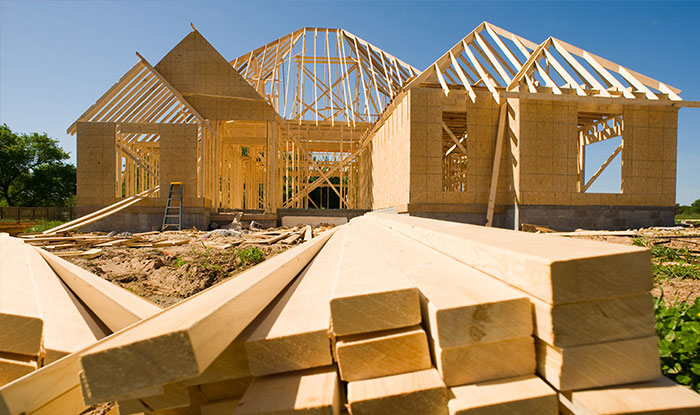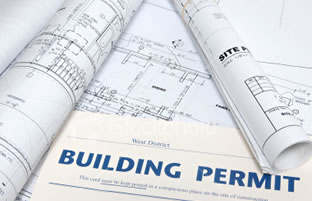Once you have qualified for and been approved for a construction loan, the lender begins paying out the money they agreed to loan to you. However, they are not just going to give the builder the cash all at once. Instead, a schedule of draws is set up.
Draws
Draws are designated intervals at which the builder can receive the funds to continue with the project. There may be several draws throughout the duration of the build. For instance, the builder may get the first 10% when the loan closes, and the next 10% after the lot is cleared and the foundation is poured. The next influx of money may come after the house is framed, and then the subsequent payout after the house is under roof and sealed up.
The number of draws and the amount of each is negotiated between the builder, the buyer, and the bank. Typically, the first draw comes from the buyer’s down payment (so it is the buyer’s money most at risk). It is also common for the bank to require an inspection at each stage before releasing the money to the builder. This helps to ensure that everything is on track and that the money is being spent as it should.
Once all the draws have been paid out and the home is built, the buyer then needs to get the end loan in order to pay off the construction loan.
The Construction Loan Rate
With a construction loan, as with all other loans, you must pay interest on the money you borrow. Typically, construction loans are variable rate loans, and the rate is set at a “spread” to the prime rate. Essentially, this means that the interest rate is equal to prime plus a certain amount. If the prime rate is 3%, for example, and your rate is prime-plus-one, then you would pay a 4% interest rate (which would adjust as the prime rate changes).
In many cases, construction loans are also set up as interest-only loans. This means you only pay interest on the money you have borrowed instead of paying down any part of the principle loan balance. This makes payment of construction loans more feasible.
You also pay only on the amount that has been paid out already. For instance, if you are borrowing $100,000, and only the first $10,000 has been paid out, you pay interest only on the first $10,000 and not on the full $100,000. You need to make monthly payments for this loan – just as with a conventional loan – so your monthly payments should start low when only a small amount has been borrowed, and gradually increase as more of the money is paid out to your builder.
Disadvantages
Construction loans make it possible to build a home when you might otherwise be unable to do so. Building a home can be a great experience if you want to design something unique or specific to your needs and the needs of your family. However, there is also significantly greater risk when procuring construction loans than just purchasing an existing home.
Some of the potential risks include:
- The Home Will Not Be Completed on Schedule and on Budget. If your house is not completed according to schedule, you may have to pay additional costs for rental accommodations, or pay two mortgages for longer than expected since you won’t be able to move in. In some cases, the final payment on your construction loan will become due and you will have to pay a fee to extend that loan – at least, until the house is finished and you are able to refinance into an end loan.
- When Finished, the Home Will Not Be Worth at Least as Much as It Cost to Build. You could encounter this unfortunate situation if the builder does a poor job, or if the overall housing market plummets. In this case, you must come up with extra cash when it comes time to refinance the construction loan into an end loan.
- You Will Be Unable to Qualify for an End Loan. If your income or credit drastically changes, you may be unable to qualify for an end loan – and this can create a significant problem, as construction loans are not meant to be permanent. When the project is done, the balance has to be paid off. It is essentially a balloon mortgage, which means you pay interest during the project, with the entire balance due at the end. If you can’t refinance to pay off that entire balance – and the lender refuses to extend the construction loan to allow you to refinance somehow – you could end up losing the new home to foreclosure if you can’t make the payment.

Final Word
If you are willing to take on the risks of a construction loan, and you have the financial cushion available to help you through the bumps in the road, a construction loan may be the right choice so you can build your dream home.
However, if you are just looking for a place to live, if you don’t have the emergency fund to deal with building setbacks, or if you are nervous about the home building process, then you may be better off choosing to simply purchase an existing home using a conventional loan. Carefully weighing the risks and benefits is important so you know that the choice you make is the right one for you.

